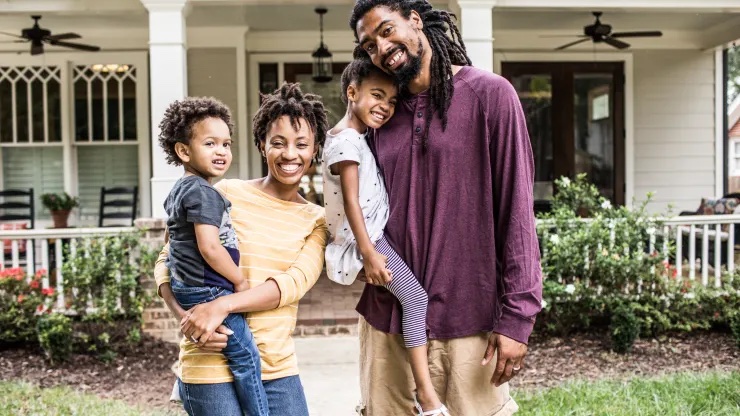For millions of Americans, the dream of homeownership—once a foundational key to building wealth—has become increasingly out of reach. Skyrocketing home prices, stagnant wages, and an outdated mortgage standard have locked countless individuals and families out of this critical pathway to economic stability. At the same time, a widespread lack of financial literacy has further compounded the barriers to homeownership, leaving many without the tools they need to navigate the complexities of the housing market.
But there is hope.
In his latest op-ed for CNBC, “A Path to Sustainable Homeownership and Economic Growth: The Case for a 40-Year Mortgage,” John Hope Bryant presents a bold and timely proposal to revitalize the American Dream. He argues that by revisiting the traditional 30-year mortgage and introducing a 40-year mortgage option—paired with federal subsidies for first-time homebuyers who complete financial literacy training—we can unlock homeownership for millions of Americans, empowering them to build wealth and contribute to the long-term uplift of our economy.
This innovative approach is more than just a solution for today’s housing challenges—it’s a way to ensure that the American Dream remains alive and attainable for future generations. By advancing financial literacy and making homeownership more accessible, we can create a more inclusive, resilient economy that benefits everyone.
Read the below excerpt and then click here to read the op-ed in its entirety:
Homeownership has long symbolized the American Dream, embodying stability, wealth creation, and community investment.
Yet, for millions of Americans, especially younger generations and first-time homebuyers, that dream is slipping away. Rising home prices, stagnant wages, and restrictive mortgage terms have made it increasingly difficult to take that crucial first step onto the property ladder.
To address this, I propose a bold new approach: a 40-year mortgage using the Federal Home Loan Bank (FHLB) system as the framework, with federal subsidies for first-time homebuyers who complete financial literacy training.
This concept combines extended mortgage terms with financial education and targeted subsidies, making homeownership more accessible while driving sustainable economic growth.
Expanding accessibility
The 30-year mortgage has been the American standard for decades, balancing affordable monthly payments with a reasonable repayment period. However, as home prices soar and interest rates rise, particularly in urban areas, even 30-year mortgages can leave many families struggling with unaffordable payments. A 40-year mortgage would lower monthly payments by extending the repayment period and possibly locking in an affordable market rate, making homeownership accessible to a broader segment of the population.
There’s no magic in the 30-year mortgage term — it was born during the Great Depression when life expectancy was also around 60 years. Today, with life expectancy nearing 80 years, a 40-year term aligns better with modern realities.
Critics may argue that a longer mortgage term increases the total interest paid, but the benefits of affordability and access outweigh this drawback. For many, the alternative is indefinite renting, which builds no equity and leaves families vulnerable to rising rents and economic displacement. A 40-year mortgage allows more people to begin building equity sooner, offering a pathway to long-term financial stability and sustained human dignity — a key element of the American Dream. A pathway up the repaired economic aspirational ladder in America.
The FHLB system, a government-sponsored enterprise that provides liquidity to member financial institutions, is the ideal vehicle for implementing this 40-year mortgage plan. By leveraging FHLB’s established infrastructure and network of regional banks, this program can be efficiently rolled out nationwide. The FHLB’s involvement ensures the program is grounded in a robust, federally backed framework, promoting stability in the housing market and tailoring solutions to meet the diverse needs of communities, from rural areas to major urban markets.
To further support first-time homebuyers, I propose federal subsidies for mortgage rates between 3.5% and 4.5% for those who complete certified financial literacy training. Subsidies would be capped at $350,000 for rural mortgages and $1 million for urban markets, reflecting the varying costs of homeownership across the country.
Financial literacy training equips first-time buyers with the skills needed to manage finances effectively, avoid predatory lending, and make informed decisions about homeownership. By tying subsidies to this training, we incentivize responsible borrowing and invest in the financial health of future generations.

